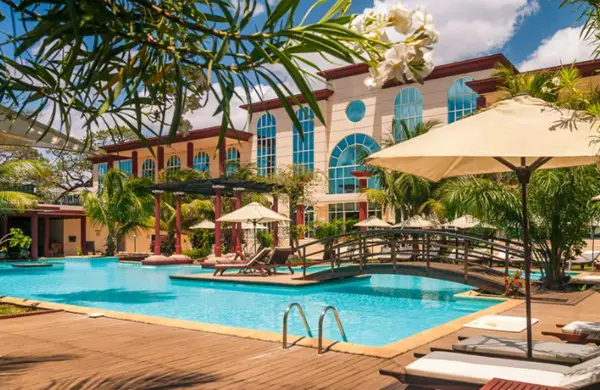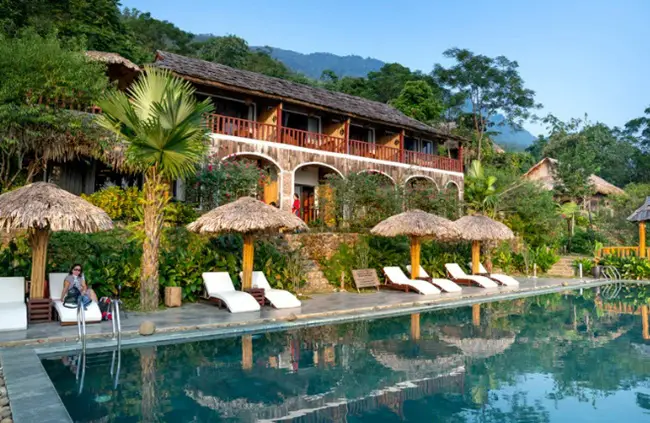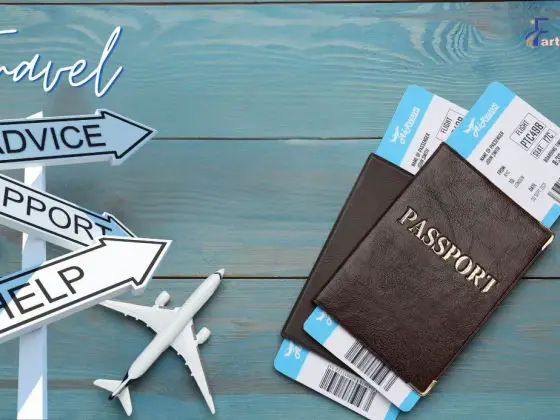In a world where luxury often equates to exorbitant prices, the dream of experiencing opulent accommodations without draining your savings might seem elusive. However, 2025 brings a refreshing shift in the travel landscape, offering savvy travelers numerous avenues to enjoy high-end experiences on a budget. From emerging destinations to innovative booking strategies, the doors to luxury travel on a budget are wide open.
This comprehensive guide unveils the secrets to enjoying lavish stays without the hefty price tag. Whether you’re a seasoned traveler or planning your first luxurious getaway, these insights will help you navigate the world of affordable opulence with confidence and style.
Luxury Travel on a Budget: How to Discover Hidden Gems
Luxury isn’t always found in towering five-star hotels or world-famous resorts. In fact, some of the most unforgettable high-end experiences are hidden in places you might never expect. From intimate boutique hotels to emerging destinations that blend affordability with splendor, today’s luxury traveler has more off-the-radar options than ever before. By shifting your focus away from mainstream tourist traps and thinking creatively about where and how you book, you can unlock exclusive, refined stays without paying premium prices.
Here are a few overlooked avenues that can lead you to unexpected luxury:
1. Boutique Hotels: Personalized Elegance with Local Flavor
Boutique hotels are the antidote to cookie-cutter accommodations. Often independently owned and deeply rooted in local culture, they bring a distinctive charm that large hotel chains can’t match. Many boutique hotels focus on providing personalized service, curated interiors, and thoughtful amenities that rival—and sometimes exceed—those of luxury chains.

For instance, The Fife Arms in the Scottish Highlands combines art, history, and design in a setting that feels both extravagant and authentic. Or consider Hotel Saint Cecilia in Austin, Texas—a former 19th-century mansion turned bohemian-chic retreat. These gems often fly under the radar, which keeps prices lower compared to bigger brands.
Pro Tip: Look for boutique hotels that are part of recognized collections like Small Luxury Hotels of the World or Mr & Mrs Smith, which provide vetting for quality and often include perks like late checkout or free breakfast when you book through their platforms.
2. Emerging Destinations: The New Luxury Travel Hotspots
Instead of splurging on established (and often overpriced) destinations like Paris or Santorini, look to up-and-coming locales that offer similar beauty and luxury—minus the inflated costs. Emerging destinations are often in the earlier stages of tourism development, meaning you’ll enjoy lower prices, fewer crowds, and more authentic experiences.
2025 hotspots to watch:
-
Georgia (the country): Known for its dramatic landscapes, centuries-old wineries, and five-star hotels like the Rooms Hotel Kazbegi, which has become a design icon.
-
Albania: Boasting Adriatic coastlines that rival Croatia’s, Albania has seen an uptick in boutique beach resorts, particularly in Ksamil and Dhërmi.
-
Vietnam: With luxury beachfront resorts in Da Nang and Phu Quoc, Vietnam offers a premium experience for a fraction of the cost you’d pay in Thailand or Bali.
-
Colombia: Cartagena and Medellín are gaining traction among upscale travelers thanks to vibrant culture, colonial charm, and an explosion of luxury boutique hotels.
3. Luxury in Nature: Eco-Resorts and Glamping Experiences
A rising trend in 2025 is the blending of nature and comfort. Luxury glamping (glamorous camping) and eco-resorts allow travelers to immerse themselves in stunning natural settings—be it a rainforest, desert, or mountain range—without sacrificing creature comforts.

Imagine waking up in a safari-style tent in Kenya with a private plunge pool and chef-prepared breakfast, or stargazing from a dome suite in Patagonia. Eco-resorts like Mashpi Lodge in Ecuador or Longitude 131° in Australia’s outback redefine what luxury in the wild looks like.
These experiences tend to cost significantly less than a luxury hotel in a major city, and the uniqueness of the setting often makes them feel far more exclusive.
4. The Power of the Sharing Economy: Airbnb Luxe and Beyond
The sharing economy has evolved. Today’s platforms like Airbnb Luxe, Plum Guide, and Onefinestay curate high-end private residences that come with hotel-like amenities such as 24/7 concierge service, daily cleaning, and even private chefs. These platforms are ideal for families, groups, or travelers wanting more privacy and space than a typical hotel can offer.
What’s even better? You can find spectacular villas, historic mansions, and oceanfront estates at nightly rates that, when split between guests, can cost less than a standard hotel room.
Insider Tip: Many hosts offer discounts for extended stays (one week or more), so consider slowing down your trip and soaking in the luxury for longer—at a lower nightly rate.
5. Urban Hideaways: Lesser-Known City Districts
Even in some of the most expensive cities, luxury can be affordable—if you know where to look. Instead of staying in the central tourist zones, explore up-and-coming neighborhoods known for their character and value.
-
In London, consider Shoreditch or Hackney, where modern boutique hotels offer trendy luxury away from the West End.
-
In Paris, areas like Canal Saint-Martin or Belleville offer chic, affordable alternatives with easy metro access and a more authentic Parisian feel.
-
In New York City, areas like Brooklyn’s Williamsburg or Harlem now host upscale hotels and residences at a much better rate than Midtown or SoHo.
Maximizing Value Through Loyalty Programs
If you’ve ever stayed loyal to a particular hotel brand or airline, you’re already halfway to unlocking a world of hidden perks. Few tools are as effective—and as underused—as loyalty programs when it comes to scoring luxury at a lower cost.. In 2025, these programs are more competitive than ever, offering enhanced benefits and personalized rewards designed to attract repeat guests and frequent flyers.
Whether you’re a seasoned traveler or someone who takes a few trips a year, joining the right loyalty program can dramatically elevate your experience, often without any added cost.
1. Hotel Loyalty Programs: Your Gateway to VIP Treatment
Major hotel chains like Marriott Bonvoy, Hilton Honors, IHG One Rewards, and World of Hyatt have robust loyalty ecosystems. Signing up is free and starts earning you points immediately, which can be redeemed for free nights, upgrades, and even experiences like spa treatments or dining credits.
Most programs now offer tiered levels of membership:
-
Base Tier: Entry-level access with basic point accrual
-
Mid-Tier (e.g., Gold/Platinum): Early check-in, free breakfast, and room upgrades
-
Elite Tier (Diamond, Titanium, Globalist): Lounge access, suite upgrades, and guaranteed late check-out
The real value comes with consistency. Even if you only stay a few nights a year, concentrating your bookings with one brand can quickly earn you status.
2025 Update: Many programs now offer “milestone rewards”, so you don’t have to reach elite status to enjoy perks. For example, Hilton Honors now grants benefits after every 10 nights stayed—even for non-elite members.
2. Leveraging Co-Branded Credit Cards for Accelerated Rewards
To supercharge your points, consider applying for a co-branded hotel credit card. These cards often come with:
-
A hefty sign-up bonus (e.g., 100,000 points)
-
Automatic elite status (e.g., Gold with Marriott or Hilton)
-
Annual free night certificates
-
Bonus points on travel-related spending
For example:
-
The Marriott Bonvoy Boundless® Visa offers a free night every year and 15 Elite Night Credits just for holding the card.
-
The Hilton Honors American Express Surpass® grants Gold status, which includes complimentary breakfast at most Hilton properties.
Even if you don’t travel often, using these cards for everyday purchases helps you passively earn enough points for at least one luxury stay each year.
3. Partner Perks and Cross-Program Benefits
Hotel programs are becoming more integrated across industries. Points can often be transferred or redeemed with airlines, rideshare apps, and even luxury retailers.
For example:
-
Marriott Bonvoy allows point transfers to 40+ airline partners.
-
Hyatt’s partnership with American Airlines AAdvantage® lets you earn reciprocal rewards: stay at Hyatt and earn airline miles, and vice versa.
-
Accor Live Limitless (ALL) partners with food delivery and transportation apps in Europe, letting you earn points even when you’re not traveling.
Tip: Use hotel loyalty apps to keep track of your status, track point expiration, and book directly for the best rates and bonus perks.
4. Booking Direct vs. OTAs (Online Travel Agencies)
Booking through platforms like Expedia or Booking.com may seem convenient, but you won’t always earn loyalty points or receive status benefits if you book outside the hotel’s direct channels.
Hotels increasingly reserve their best perks—like room upgrades, welcome amenities, or early check-in—for direct bookers. This means:
-
Book via the hotel’s website or app
-
Enter your loyalty number at checkout
-
Call ahead to confirm any elite benefits you’re entitled to
In 2025, hotels are also offering dynamic pricing rewards, allowing you to redeem points for off-peak nights at far lower rates than before. This flexibility gives your points even more value.
5. Maximizing Redemption: How to Stretch Your Points
Not all redemptions offer the same value. Here are strategies to ensure you’re getting the most from your loyalty program:
-
Avoid high-demand travel dates where point requirements surge
-
Mix points and cash when a full reward night is too expensive
-
Book award stays at boutique or lifestyle brands within a chain (e.g., Hyatt’s Alila, Marriott’s Autograph Collection)
-
Look for 5th-night-free promotions (Marriott offers this on reward bookings)
Some brands even offer experiential redemptions—private dinners with chefs, helicopter tours, wellness retreats—that turn points into unforgettable memories.
6. Status Matching and Fast-Track Promotions
Many programs offer status matching, allowing you to transfer your elite status from one hotel or airline to another. This is incredibly useful if you’re trying a new brand or traveling to a region where your usual chain isn’t available.
Example: If you have Gold status with Hilton, Hyatt may match you to the Explorist level, giving you lounge access and late checkout perks right away.
Fast-track challenges are also common: stay a certain number of nights within 60–90 days and earn mid- or high-tier elite status for the year. Watch for these promotions on hotel websites or forums like FlyerTalk and The Points Guy.
Strategic Timing: When to Book for the Best Deals
Timing isn’t just everything—it’s often the difference between paying full price and enjoying five-star luxury for a fraction of the cost. Whether you’re planning months in advance or making spontaneous weekend plans, understanding the rhythm of the travel industry is key to scoring the best deals on luxury accommodations. Knowing when to book is just as important as knowing where to book.
In 2025, with the rise of dynamic pricing algorithms and real-time availability updates, timing your reservation correctly can save you hundreds—sometimes thousands—on premium stays.
1. Book Early—But Not Too Early
While many believe that booking far in advance guarantees the lowest rates, that’s not always true—especially for luxury hotels. Most properties adjust prices based on demand, and booking too early may mean locking in a higher-than-average rate.
The sweet spot?
-
3 to 6 months in advance for international luxury hotels
-
2 to 4 months ahead for domestic high-end stays
This is when hotels begin to release promotions to fill rooms but haven’t yet spiked prices due to last-minute demand. Signing up for hotel newsletters can also alert you to early-bird discounts or flash sales.
2. Embrace Last-Minute Luxury
Believe it or not, waiting until the eleventh hour can also pay off—especially if you’re flexible and adventurous. In cities and resorts with multiple upscale properties, unsold rooms often get discounted dramatically 24 to 72 hours before check-in.
Apps like:
-
HotelTonight
-
SnapTravel
-
Dayuse (for short stays or day access to amenities)
…are excellent resources for finding last-minute luxury at up to 60% off. In 2025, many hotel brands will also offer exclusive mobile-only rates when you book through their official apps.
Tip: Weekdays tend to yield better last-minute availability at resorts, while weekends work best in business-heavy cities where luxury hotels empty out on Saturdays.
3. Avoid Peak Seasons—and Target Shoulder Seasons
Peak travel seasons almost always come with higher rates. Holidays, school breaks, and major local events drive prices up and leave little room for upgrades or perks.
Instead, aim for the shoulder seasons—the periods just before or after high season—when the weather is still pleasant, crowds are thinner, and rates drop considerably.
Examples:
-
Europe: Late April to early June, or mid-September to mid-October
-
The Caribbean: Late May to early July, or early November
-
Southeast Asia: Late January to March (before the summer humidity sets in)
In 2025, some resorts are also introducing “micro-season” promotions, offering flash discounts during brief lulls in bookings. Following a hotel’s social media or email list can give you first access.
4. Mid-Week vs. Weekend: The Smart Switch
Luxury hotels in urban centers—especially business districts—tend to fill up during the workweek but have more availability on weekends. Conversely, resorts and coastal properties tend to be busier on weekends and cheaper mid-week.
When to book what:
-
City hotels: Lower rates Thursday–Sunday
-
Resort or beach hotels: Better deals Monday–Thursday
A Wednesday-to-Friday or Sunday-to-Tuesday trip can often unlock significantly lower rates, more room options, and even greater flexibility on upgrades and amenities.
5. Holidays and Events: Plan Around, Not During
Major holidays and local festivals (think Christmas, New Year’s Eve, Carnival, or fashion weeks) can drive up room rates by 50% or more. If you’re set on visiting a destination during these times, consider arriving just before or immediately after the peak date—when rates start to normalize.
Example: In 2025, Paris rates spike for the Summer Olympics (July–August), but early June or mid-September offers great weather and far better deals.
Pro Tip: Use event calendars or local tourism boards to map out major events that may impact hotel pricing, then schedule around them.
6. Use Price Tracking and Alerts
Tech-savvy travelers in 2025 rely on AI-powered booking tools that monitor fluctuations and send alerts when luxury rooms drop below average. Tools like:
-
Google Hotels
-
Hopper
-
Kayak Price Alerts
…can help you lock in the best rate or alert you when it’s time to pounce on a deal.
For luxury-specific platforms, Virtuoso and Travelzoo’s Top 20 Deals often include value-packed packages with upgrades, dining credits, and complimentary perks that would otherwise add hundreds to your final bill.
Conclusion
Luxury travel on a budget in 2025 is now accessible to more than just the wealthy. With strategic planning, a flexible mindset, and a willingness to explore beyond traditional paths, opulent experiences are within reach for budget-conscious travelers. By leveraging loyalty programs, embracing emerging destinations, and prioritizing authentic experiences, you can indulge in the luxury you desire without compromising your financial well-being.
Embark on your journey with confidence, knowing that the world of affordable luxury awaits. Your next lavish adventure is not just a dream—it’s a well-planned reality.






